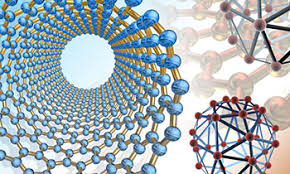Mechanical and Materials Engineering, Department of
Document Type
Article
Date of this Version
2014
Citation
Exp Eye Res. 2014 October ; 127: 224–235
Abstract
The bulk of aqueous humor passing through the conventional outflow pathway must cross the inner wall endothelium of Schlemm’s canal (SC), likely through micron-sized transendothelial pores. SC pore density is reduced in glaucoma, possibly contributing to obstructed aqueous humor outflow and elevated intraocular pressure (IOP). Little is known about the mechanisms of pore formation; however, pores are often observed near dome-like cellular outpouchings known as giant vacuoles (GVs) where significant biomechanical strain acts on SC cells. We hypothesize that biomechanical strain triggers pore formation in SC cells. To test this hypothesis, primary human SC cells were isolated from three non-glaucomatous donors (aged 34, 44 and 68), and seeded on collagen-coated elastic membranes held within a membrane stretching device. Membranes were then exposed to 0%, 10% or 20% equibiaxial strain, and the cells were aldehyde-fixed 5 minutes after the onset of strain. Each membrane contained 3–4 separate monolayers of SC cells as replicates (N = 34 total monolayers), and pores were assessed by scanning electron microscopy in 12 randomly selected regions (~65,000 μm2 per monolayer). Pores were identified and counted by four independent masked observers. Pore density increased with strain in all three cell lines (p < 0.010), increasing from 87±37 pores/mm2 at 0% strain to 342±71 at 10% strain; two of the three cell lines showed no additional increase in pore density beyond 10% strain. Transcellular “Ipores” and paracellular “B-pores” both increased with strain (p < 0.038), however B-pores represented the majority (76%) of pores. Pore diameter, in contrast, appeared unaffected by strain (p = 0.25), having a mean diameter of 0.40 μm for I-pores (N = 79 pores) and 0.67 μm for B-pores (N = 350 pores). Pore formation appears to be a mechanosensitive process that is triggered by biomechanical strain, suggesting that SC cells have the ability to modulate local pore density and filtration characteristics of the inner wall endothelium based on local biomechanical cues. The molecular mechanisms of pore formation and how they become altered in glaucoma may be studied in vitro using stretched SC cells.
Included in
Mechanics of Materials Commons, Nanoscience and Nanotechnology Commons, Other Engineering Science and Materials Commons, Other Mechanical Engineering Commons



Comments
© 2014 Elsevier Ltd.
doi:10.1016/j.exer.2014.08.003